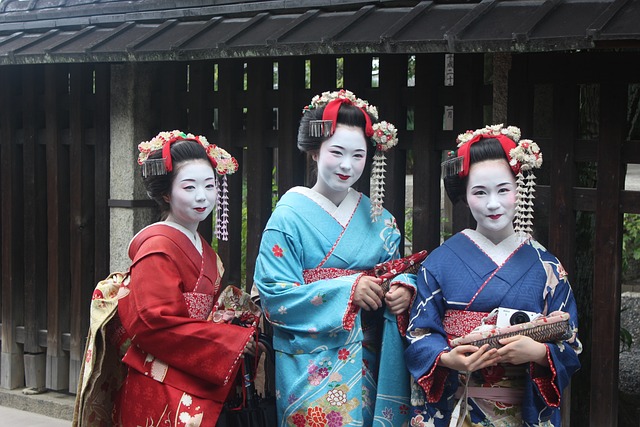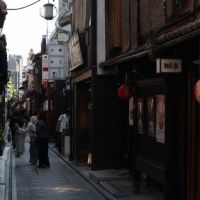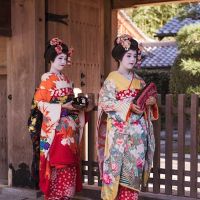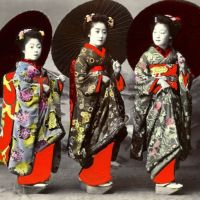Maikos and Kyoto Festivals: A Celebration of Tradition
S-fleage
S-fleage is a Kyoto-based company. We are proud to introduce the charms of Kyoto to the world. We hope this article will help you to experience Kyoto.
Latest posts by S-fleage (see all)
Kyoto, the cultural heart of Japan, is a city where tradition and history come alive.
Among the many facets of its rich heritage, the maiko—apprentice geisha—stands out as a symbol of grace and elegance.
Alongside the enchanting presence of maikos, Kyoto’s festivals offer a vibrant tapestry of customs and celebrations that date back centuries.
Join me as we explore the world of maikos and the timeless festivals that make Kyoto a truly magical place.
Contents
History of Maiko
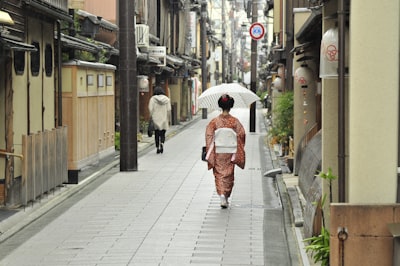
Maikos, or apprentice geishas, have been an iconic part of Kyoto’s cultural landscape for centuries.
Their origins can be traced back to the Edo period (1603-1868) when young girls began serving tea to travelers around Yasaka Shrine.
Initially, mizuchaya (tea houses) served only tea and dango (rice dumplings), but eventually, they began offering sake and food as well.
The young women working there started to perform shamisen music and dances, imitating Kabuki theater.
Today, maikos continue to train rigorously in traditional arts such as dance, music, and tea ceremony, preserving centuries-old customs while adapting to modern times.
The Enchanting Maiko
The maiko, often seen in Kyoto’s historic districts like Gion, is undergoing rigorous training in traditional Japanese arts such as dance, music, and tea ceremony.
With their striking kimono, elaborate hairstyles adorned with intricate hairpieces, and the distinctive white makeup with red and black accents, maikos are living embodiments of Japan’s cultural heritage.
Training and Dedication
The path to becoming a maiko is demanding.
Young girls, often in their teens, leave their families to live in an okiya (geisha house), where they train under the guidance of experienced geishas.
Their education includes mastering the art of conversation, traditional instruments like the shamisen, and the iconic dance performances that captivate audiences.
Cultural Significance
Maikos play a crucial role in preserving and promoting Japanese culture.
Their performances at tea houses and cultural events allow visitors to experience the beauty of traditional Japanese arts firsthand.
They are also cultural ambassadors, representing the elegance and grace of Kyoto to the world.
Kyoto’s Timeless Festivals and roles of Maiko

Kyoto’s festivals are an integral part of the city’s cultural landscape, offering a glimpse into Japan’s rich history and traditions.
Here are a few of the most notable festivals that you shouldn’t miss:
Gion Matsuri (祇園祭)
Held every July, Gion Matsuri is one of Japan’s most famous festivals.
It spans the entire month with various events, the highlight being the grand procession of beautifully decorated floats (yamaboko) on the 17th and 24th.
This festival originated in the 9th century as a purification ritual to appease the gods during an epidemic and has since evolved into a grand festival that symbolizes Kyoto.
https://kyoto.travel/en/season_festivals/gion_matsuri.html
Basic Information and Tips of the Gion Festival
When attending the Gion Festival in Kyoto, it’s important to be prepared for large crowds and hot weather.
Arrive early to secure a good spot for viewing the parade, as popular areas can become crowded quickly.
Wearing comfortable shoes is essential since you’ll likely be on your feet for extended periods.
It’s also advisable to bring a hat, sunglasses, and sunscreen to protect yourself from the sun.
Stay hydrated by bringing a water bottle or purchasing drinks from vendors.
Be mindful of your belongings in crowded areas, and consider using public transportation, as parking can be difficult.
Lastly, take the opportunity to explore side streets and stalls, where you can enjoy local food and crafts.
The Role of Maikos in the Gion Festival
In the Gion Festival, maikos play a vital role in preserving the cultural and traditional aspects of the event.
Traditionally, the yamahoko floats maintain a strict prohibition against women onboard during the procession, so maikos do not ride on them.
Instead, they participate in various related events and ceremonies, adding elegance and authenticity to the festival with their beautiful kimonos and traditional hairstyles.
Their presence highlights the connection between the festival and Kyoto’s rich geisha culture.
Aoi Matsuri (葵祭)

Celebrated on May 15th, Aoi Matsuri is one of Kyoto’s three main festivals, alongside Gion Matsuri and Jidai Matsuri.
The festival features a grand procession from the Imperial Palace to the Kamo Shrines, with participants dressed in the elegant attire of the Heian period.
The festival’s name comes from the hollyhock leaves (aoi) used to decorate the participants and their costumes.
https://kyoto.travel/en/season_festivals/aoi_matsuri.html
Basic Information and Tips of the Aoi Matsuri
When attending the Aoi Matsuri in Kyoto, it’s important to plan ahead to fully enjoy this traditional event.
The festival takes place annually on May 15th, with a grand procession starting at the Imperial Palace and continuing to the Shimogamo and Kamigamo Shrines.
Arrive early to secure a good viewing spot, as the parade route can become crowded.
Bring a folding chair or cushion if you plan to sit along the roadside for an extended period.
If you want to sit back and enjoy the event at a leisurely pace, consider purchasing tickets for paid seating.
Wear comfortable clothing and footwear, as you’ll likely spend a lot of time on your feet.
Since the festival occurs in May, be prepared for variable weather—consider bringing an umbrella or raincoat in case of rain.
Public transportation is recommended, as parking is limited.
Lastly, take some time to explore the historic shrines and enjoy the cultural performances that often accompany the festival.
The Role of Maikos in the Aoi Matsuri
At the Aoi Matsuri, maikos contribute to the cultural richness and traditional atmosphere of the festival, though their role is less prominent compared to other events.
The Aoi Matsuri primarily features a historical reenactment with participants dressed in Heian period costumes.
While maikos are not central to the main procession, they may be involved in related events or festivities around the festival, showcasing traditional arts such as dance and music.
Their presence helps highlight the connection between Kyoto’s rich geisha culture and its historical traditions, providing visitors with a glimpse of the elegance and artistry associated with maiko.
Additionally, maikos may attend festival-related events at local teahouses or cultural venues, offering visitors an opportunity to experience a unique aspect of Kyoto’s living traditions.
Jidai Matsuri (時代祭)
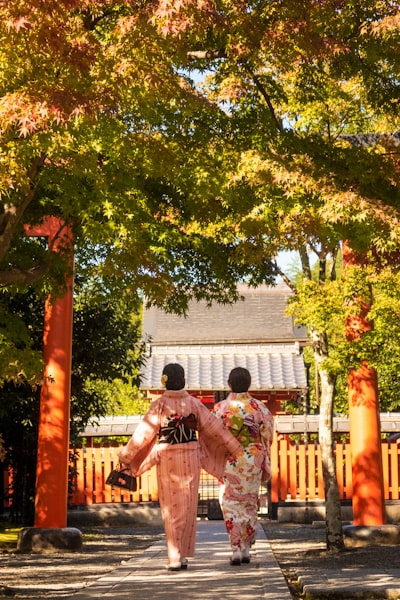
On October 22nd, Jidai Matsuri, or the Festival of Ages, takes place to commemorate the foundation of Kyoto.
The festival features a historical procession representing various periods of Japanese history, from the Meiji Restoration back to the Heian period.
It is a vivid reenactment of Kyoto’s illustrious past, showcasing traditional costumes and customs.
The costumes and ritual implements used in the processions of each era are authentic, meticulously crafted based on strict historical research.
The primary aim is to showcase the traditional craftsmanship that Kyoto developed as the capital of Japan.
https://kyoto.travel/en/season_festivals/jidai_matsuri.html
Basic Information and Tips of the Jidai Matsuri
When attending the Jidai Matsuri in Kyoto, held annually on October 22nd, it’s important to plan your visit to fully appreciate this historical event.
The festival features a grand procession showcasing Japanese history through period costumes, beginning at the Imperial Palace and ending at the Heian Shrine.
Arrive early to secure a good viewing spot, as the procession attracts large crowds.
Since the festival takes place in late October, be prepared for cooler weather by dressing in layers.
Comfortable walking shoes are recommended, as you may need to walk a significant distance to find an ideal spot.
Public transportation is advised, as parking is limited and traffic can be heavy.
Additionally, consider bringing a camera to capture the vibrant costumes and the unique atmosphere.
Take the opportunity to explore the Heian Shrine and nearby cultural attractions to enhance your experience.
The Role of Maikos in the Jidai Matsuri
At the Jidai Matsuri, maikos also contribute to the festival’s cultural atmosphere, appearing dressed as historical figures like Murasaki Shikibu and Sei Shonagon.
Additionally, they sometimes perform traditional arts, such as dance and music, at related events and ceremonies.
Their involvement highlights the connection between Kyoto’s living cultural traditions and its historical heritage.
Additionally, maikos might attend festival-related gatherings or performances, offering visitors a glimpse into the elegance and artistry of Kyoto’s geisha culture, further enriching the festival experience.
Miyako Odori (都をどり)

While not a festival in the traditional sense, Miyako Odori is an annual dance performance by geishas and maikos of the Gion district, held every April.
This elegant and mesmerizing performance is a celebration of spring and an opportunity to witness the refined artistry of Kyoto’s geishas and maikos.
Basic Information and Tips of the Miyako Odori
When attending the Miyako Odori in Kyoto, it’s important to plan ahead to make the most of this traditional geisha dance performance.
The event is typically held in April at the Gion Kobu Kaburenjo Theatre.
To secure tickets, it’s advisable to book in advance, as performances often sell out quickly.
Tickets range from 2,000 yen to 7,500 yen, with prices varying depending on the seating.
Arrive early to find your seat and enjoy the pre-performance atmosphere.
Dress smartly to respect the cultural setting, though formal attire is not required.
Consider bringing a guidebook or brochure to help you appreciate the cultural and historical context of the dances.
Photography is basically not allowed during performances, so check the rules beforehand.
Lastly, take some time to explore the Gion district before or after the show to enhance your experience of Kyoto’s traditional arts and culture.
The Role of Maikos in the Miyako Odori
In the Miyako Odori, maikos play a crucial role in showcasing the traditional arts of Kyoto.
The performance is an annual event where both maiko and geiko (fully-fledged geisha) demonstrate their skills in classical Japanese dance and music.
Maikos participate in the beautifully choreographed dances, wearing exquisite kimono and traditional hairstyles adorned with seasonal ornaments.
Their role involves not only performing but also embodying the grace and refinement of Kyoto’s geisha culture.
For example, at the tea ceremony held before the performance, geikos (senior geisha) prepare the tea, while maikos assists.
The Miyako Odori provides a rare opportunity for audiences to witness the artistry and dedication of maiko up close, as they perform alongside their geiko mentors, offering a glimpse into the world of Kyoto’s renowned hanamachi (geisha districts).
Through their participation, maikos contribute to preserving and promoting the cultural heritage of Kyoto’s traditional performing arts.
Embracing Tradition in Modern Times

In a rapidly modernizing world, Kyoto stands as a beacon of tradition and cultural preservation.
The dedication of maikos to their craft and the city’s commitment to celebrating its festivals are testaments to the enduring spirit of Japanese culture.
Visitors to Kyoto have the unique opportunity to immerse themselves in this living heritage, experiencing the grace of maikos and the vibrant festivities that continue to enchant and inspire.
Whether you’re strolling through the historic streets of Gion, captivated by the elegance of a maiko’s dance, or joining the throngs of people celebrating at a festival, Kyoto offers a profound connection to Japan’s rich cultural tapestry.
It’s a place where the past is not forgotten, but cherished and celebrated, making it a must-visit destination for anyone seeking to understand and appreciate the beauty of Japanese tradition.

